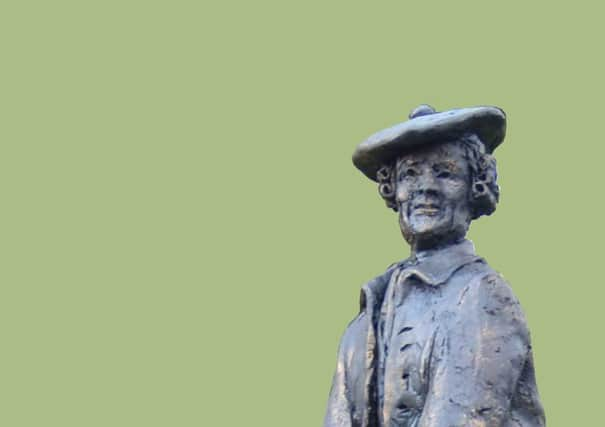How a golf saved an Edinburgh man from the gallows


Rattray was an extremely influential figure at the Honourable Company of Gentlemen Golfers in Edinburgh with the surgeon compiling the first ever written rules of the game 273 years ago today on March 7 1744.
He twice won the coveted Silver Club, which had been presented to the Gentlemen Golfers by the Edinburgh Town Council for annual competition, in 1744 and 1745.
Advertisement
Hide AdAdvertisement
Hide AdBy the following year, Rattray was in the thick of the doomed Jacobite uprising and facing execution.
The club, which originally played on Leith Links before later moving to Muirfield in East Lothian, had a number of high-ranking professional members in its fold including Lord President of the Court of Session, Duncan Forbes, who was also club secretary.
It was Lord President Forbes who was to secure Rattray’s freedom after the surgeon was imprisoned in Inverness following the Battle of Culloden in 1746.
The surgeon’s role in the rebellion was forged after his older brother James, the Laird of Craighall, suggested he offer his medical services to Bonnie Prince Charlie.
Advertisement
Hide AdAdvertisement
Hide AdAs the Jacobites mobilised ahead of Prestonpans, Rattray, who lived at South Foulis Close off the High Street, rode to the East Lothian encampment along with John Lauder, a fellow of the Incorporation of Surgeons, later known as the Royal College of Surgeons of Edinburgh.
According to the Royal College, Rattray tended the wounded and travelled as surgeon with the army as it advanced into England and then retreated from Derby, eventually becoming surgeon general and personal surgeon to Prince Charles.
Records show Rattray and Lauder were captured on the battlefield at Culloden on April 16 1746.
The pair were held in a church in Inverness and their medical instruments removed, according to accounts. They were moved to Inverness Prison three days later.
Advertisement
Hide AdAdvertisement
Hide AdTheir detention, however, was short lived after Lord President Forbes sought a direct reprieve for Rattray and Lauder from the Duke of Cumberland.
Following his release, Rattray headed to Culloden House, the family home of his golfing companion.
One account of his release in The Lyon in Mourning, a collection of papers, letters and speeches of Jacobite supporters of the ‘45 Uprising, said: “Mr John Rattray came to Culloden House after his liberation at Inverness. President Forbes told the said Mr Rattray that he had obtained his liberation upon condition that he should become evidence.”
John Rattray was horrified by the prospect of becoming a witness for the state, according to the account.
Advertisement
Hide AdAdvertisement
Hide AdIt added: “This provoked Mr Rattray so much that he told the President in a passion that he would far choose to give himself up in a second and to return to the miserable situation of a prisoner once more than to become an evidence.”
Lord President Forbes convinced him not to surrender with the law man sure he was able to spare the surgeon.
The medics returned to Edinburgh and Rattray confided in a friend about Lord Presidents’ offer.
It is said the Lord President, who died the following year, was so taken aback at Rattray sharing details of the proposal that “it had bad effects upon the President’s health, and even hastened his death.
Advertisement
Hide AdAdvertisement
Hide Ad“It is indeed a prevailing opinion that the President died of a broken heart,” the account said.
Rattray was quickly seized in the capital and was again taken prisoner on 28 May 1746 before being sent to London, by Cumberland’s orders, to act as a witness.
He was finally released on January 7 1747 and eventually returned to his usual routine of work and sport.
In 1751, he won the Silver Club for the third time. Today, work continues to install a statue of John Rattray on Leith Links, close to the first hole of the original course that was played 273 years ago today.
